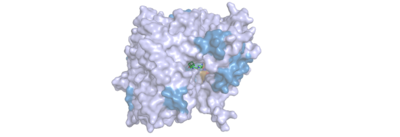Introduction
Proline Peptidase Overview
History
Dipeptidyl Peptidase IV's role in the inactivation of incretin hormones was discovered in the 1990s. Animal studies were conducted in the late 1990s, followed by human studies in the early 2000s. The first DPPIV inhibitors (sitagliptin, vildagliptin, alogliptin, saxagliptin, and linagliptin) were approved starting in 2006, and now serve as monotherapy or add-on to other therapies in a glucose-lowering capacity. [1] Since their approval, there have been multiple long-term trials to continue exploring the long-term effects of these medications. It is known that gliptins directly impact the pancreas, kidney, heart, and vessels. The most investigated thus far is the effects of gliptins on real and cardiovascular functioning. [2] Results of phase II and III trails indicated that gliptins did not harm the cardiovascular system. A meta-analysis implicated two possible beneficial effects for patients treated with these medications: a reduction in cardiovascular effects and a direct renoprotective effect. [3]
Function
town tartness
Structure
Something about interactions...
[4]
Overview
Catalytic Triad
[4]
Mechanism
The picture of the mechanism is inserted but not visible, maybe too high of a quality?
Once a substrate is bound in the active site, DPPIV utilizes a covalent catalysis mechanism to cleave the substrate at the penultimate position. Asp708 of the (Ser630, His 740, Asp708) pulls electron density from His740 allowing the histidine to pull electron density from Ser630, making serine a stronger nucleophile. The water molecule attacks the carbonyl carbon, breaking the newly formed covalent bond, and releasing the first two residues of the starting substrate. The active site resets.
Figure 5. Mechanism of the catalytic triad of DPPIV.
Inhibitors
Relevance
Diabetes
HIV/AIDS

